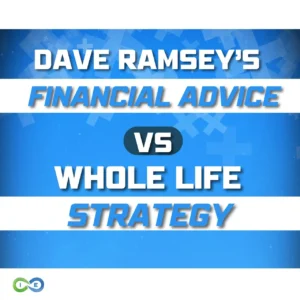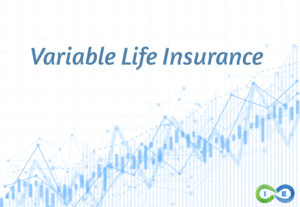Whole life insurance is a critical component of a comprehensive financial plan, providing not only a death benefit but also a savings vehicle through its cash value component. Within whole life insurance, a pivotal choice exists between participating life insurance policies and non-participating policies, each carrying distinct implications for policyholders.
Participating Life Insurance: Sharing in Success
Participating life insurance policies stand out for their dividend-paying feature, effectively giving policyholders a stake in the insurance company’s surplus profits. This unique characteristic means that as a participating policy owner, you’re entitled to a share of the company’s profits in the form of dividends. These dividends, though not guaranteed, have historically been paid by mutual insurance companies, even through economic downturns, underscoring their reliability.
The dividends from participating life insurance policies can be utilized in several ways, such as reinvesting into the policy through paid-up additions, which enhance both the cash surrender value and the death benefit. This mechanism allows your policy’s value to grow over time, offering increased financial security and benefits to your estate and loved ones.
THE ULTIMATE FREE DOWNLOAD
The Self Banking Blueprint
A Modern Approach To The Infinite Banking Concept

Participating Policies vs Non-Participating Policies
Participating Life Insurance Policies
Participating life insurance is dividend paying whole life insurance where the owner participates in the insurance company’s profits, via life insurance dividends. The word participating connotes the idea that the owner of the policy “participates” in surplus profits of the insurance company, which are derived from things like policyholder premiums paid and return on investments primarily in the form of bonds, mortgage loans, policy loans, stocks, and real estate.
Cash Value
This cash value component is a key element in participating life insurance policies, specifically high cash value whole life policies, providing a layer of financial flexibility through policy loans and withdrawals, which can be used for various personal or investment needs.
Participating Life Insurance Dividends
Life insurance dividends are considered return of premium, therefore there is no tax due when a dividend is paid to a participating life insurance policy holder. Your dividends can be used to buy additional life insurance through paid-up additions, which grow your death benefit and cash value.

Participating life insurance plans provide several dividend options, including:
- Pay Your Policy’s Premiums
- Take the Cash Out (for whatever you want)
- Pay Down an Existing Loan
- Buy Additional Term Life Insurance
- Leave with Insurer Earning Interest
Dividends are not guaranteed, however, the best mutual life insurance companies that offer participating whole life insurance have paid dividends for over a hundred years. That means these mutual companies have paid dividends through the great depression of 1929, the great financial collapse of 2008, and more recently, through the Covid pandemic.
| Company | 2014 | 2015 | 2016 | 2017 | 2018 | 2019 | 2020 | 2021 | 2022 | 2023 | 2024 | 2025 | Avg |
|---|---|---|---|---|---|---|---|---|---|---|---|---|---|
| MassMutual | 7.1 | 7.1 | 7.1 | 6.7 | 6.4 | 6.4 | 6.2 | 6 | 6 | 6 | 6.1 | 6.4 | 6.4 |
| Penn Mutual | 6.34 | 6.34 | 6.34 | 6.34 | 6.34 | 6.1 | 6.1 | 5.75 | 5.75 | 5.75 | 6 | 6.12 | 6 |
| New York Life | 6 | 6.2 | 6.2 | 6.3 | 6.1 | 6 | 6.1 | 5.8 | 5.8 | 5.8 | 6.03 | ||
| Ohio National | 6 | 6 | 6 | 5.75 | 5.4 | 5.4 | 5.2 | 4.7 | N/A | N/A | N/A | N/A | 5.66* |
| Guardian Life | 6.25 | 6.05 | 6.05 | 5.85 | 5.85 | 5.85 | 5.65 | 5.65 | 5.65 | 5.75 | 5.9 | 6.1 | 5.86 |
| Northwestern Mutual | 5.6 | 5.6 | 5.45 | 5 | 4.9 | 5 | 5 | 5 | 5 | 5 | 5.5 | 5.16 | |
| Lafayette Life | 5.2 | 5.2 | 5.2 | 5.2 | 5.2 | 5.2 | 5.2 | 5.2 | 5.2 | 5.2 | 5.3 | 5.75 | 5.2 |
| Foresters Financial | 6.42 | 6.65 | 6.83 | 6.58 | 6.23 | 6 | 5.8 | 5.25 | 5.8 | N/A | 5.9 | 6.17** | |
| MetLife / Brighthouse | 5.25 | 5.1 | 5 | 4.7 | 4.7 | 4.7 | 4.7 | N/A | N/A | N/A | 4.86*** | ||
| Ameritas | 5.25 | 5.25 | 5.15 | 5 | 5 | 5 | 5 | 4.75 | 4.6 | 4.6 | 4.96 | ||
| Minnesota Life | 5 | 5.25 | 5 | 5 | 5 | 4.83 | 4.63 | ||||||
| National Life Group | 5.75 | 5.75 | 5.75 | 5.75 | 5.25 | 5.25 | 4.5 | 4.25 | 5 |
**Foresters rates through dividend payment to policyholders of record in 2022
***MetLife / Brighthouse through 2020
Non-Participating Life Insurance Policies
Contrast participating life insurance with a non-participating life insurance policy, where the owner does not participate in the surplus earnings of the company, and therefore, does not receive a life insurance dividend. Non participating insurance policies are typically seen in final expense insurance policies, which are small whole life insurance policies.
De-Mutualized
There are some companies that offer larger participating whole life policies that do not receive dividends, such as MetLife. The interesting thing about MetLife is the company was once a mutual company, but has since “de-mutualized” and become a stock company back in the year 2000. Another more recent company to “de-mutualize” is Ohio National.
Mutual Insurance Companies
A mutual insurance company is a participating life insurance company where the participating policyowners are joint owners in the company. With a mutual insurance company offering participating whole life insurance, the owner of the policy shares in the profits of the company, i.e. “participates” in the profits as a mutual owner in the company. This mutuality in the insurer’s profits, aligns the company’s interests with those of the policyholders, fostering a sense of shared success and stability.
Stock Insurance Company
Contrast a mutual company, with a stock insurance company, where the shareholders or stockholders of the company are the joint owners of the company. As a result, the stock company will put the interest of its shareholders over those of the policyholders, at it seeks to maximize shareholder value. And this is why stock insurance companies are not an ideal choice when looking to buy a participating insurance policy.
THE ULTIMATE FREE DOWNLOAD
The Self Banking Blueprint
A Modern Approach To The Infinite Banking Concept

Participating Life Insurance Policies Pros and Cons
| Whole Life Insurance Advantages | Whole Life Insurance Disadvantages |
|---|---|
| No maximum annual contribution limit | Must qualify for coverage through underwriting |
| No required minimum distributions | Must ensure that the policy does not become a Modified Endowment Contract (MEC) |
| Tax-advantaged growth | |
| Guaranteed minimum return | |
| Premium will not increase (even as the insured ages) | |
| May receive dividends (tax-free) | |
| No stock market risk | |
| Death benefit protection | |
| Funds available for "living benefits" like illness and long-term care needs | |
| Return continues being paid on "borrowed" funds | |
| Easy and fast access to funds for high-ticket purchases |
Other Types Of Life Insurance
Other types of life insurance are non-participating, which include term life and universal life.
Term Life Insurance
A term policy is a contract that specifies a specific amount of time that you have life insurance coverage. Term life insurance is simply renting a life insurance death benefit. Once the term insurance policy expires, you are no longer covered. You have the option of renewing your term policy, but your premium will increase substantially every year.
Term life insurance coverage can never be a participating policy because it does not accrue cash value and the policyholder does not participate in the profits of the insurance company. Term life insurance is a great way to protect income or a mortgage.
Why Universal Life Insurance is a Non-Participating Insurance Policy
There are different types of universal life, including guaranteed universal life, indexed universal life, and variable universal life. All are considered a permanent life insurance policy, although some maintenance may be required to keep your policy in force if certain market returns are not met.
Guaranteed Universal Life (GUL)
Guaranteed Universal Life provides a guaranteed death benefit protection as long as the required premium payments are made. Universal life insurance policy owners are NOT viewed as owners of the life insurance company. This is the case even if the life insurance company is a mutual company based on how the universal policy holder’s interest is calculated. Basically, owners are paid interest instead of receiving an annual dividend as a return of premium based upon company performance.
Indexed Universal Life (IUL)
Indexed Universal Life provides a return based on the performance of an underlying index, such as the S&P 500. IUL policies include a cap and floor, providing a maximum and minimum return. Indexed universal life policy aggregate cash values are invested differently by the the life insurance company than participating policy cash values. Generally, this feature of IUL insurance is related to the company holding these aggregate cash values in an account that is separate from the life insurance company’s general account.
Variable Universal Life (VUL)
Variable Universal Life allows you to allocate all or a portion of your cash value into accounts that are similar to mutual funds, tracking the returns of the stock market. Variable universal life policy cash values are removed a step further from the life insurance company because they are generally not managed by the company itself. Rather, VUL sub accounts are created, which are basically mutual funds, which are managed by third parties.
3 Key Differences Between Participating vs Non-Participating Life Insurance
The three key differences between participating life insurance vs non participating life insurance are as follows:
- Mutual vs Stock Insurance Company
- Cash Value Accumulation and Growth
- Dividend Payments
So Which is Better?
For us at I&E, the decision is simple. Would you rather have a properly structured participating life insurance policy that maximizes cash value growth or a policy that is focused on the death benefit?
Ultimately, the decision between participating and non-participating life insurance hinges on individual financial goals and the reason for purchasing the life insurance. Participating life insurance policies appeal to those looking for an opportunity to potentially increase their policy’s value and benefits through the company’s performance. On the other hand, non-participating life insurance policies may be better suited for those who prefer a large initial death benefit and are not concerned about growing cash value or the benefits that entails.
Conclusion and Next Steps
The distinction between participating and non-participating life insurance policies represents more than just a choice in potential dividends; it symbolizes a decision on how you wish to see your premiums work for you over time.
Participating life insurance offers a unique blend of security and potential growth, allowing policyholders to benefit from the insurer’s success through dividends. These dividends can significantly enhance the policy’s value, providing additional flexibility and financial opportunities through mechanisms like paid-up additions and policy loans.
On the other hand, non-participating policies offer a straightforward, no-surprises approach to whole life insurance. They provide the guaranteed death benefit and cash value growth inherent to whole life policies without the variable of dividends. This can be particularly appealing for those seeking a lower cost permanent insurance policy, without the need for the additional benefits, such as cash value growth and dividends.
Whether you value the potential for surplus dividends and enhanced policy growth with participating life insurance or prefer the straightforward, guaranteed approach of non-participating life insurance, the key is to make an informed decision that aligns with your broader financial strategy.
Contact Us Today
Navigating the world of whole life insurance can be frustrating if you don’t have the right guide to help you on your journey. At I&E, we understand the nuances of whole life insurance and are committed to helping you navigate this complex landscape. Our team of Pro Client Guides are ready to guide you through the differences, benefits, and considerations of participating and non-participating policies to find the solution that best fits your needs. Don’t navigate the complex world of whole life insurance alone. Contact us today for a personalized consultation, and let us help you secure your financial future with the policy that best suits your needs and goals.
THE ULTIMATE FREE DOWNLOAD
The Self Banking Blueprint
A Modern Approach To The Infinite Banking Concept






2 comments
Gil R
I have been toying with the idea to start a policy that I can take full benefits of the opportunities of capturing the principle and interest back using the properly structure whole life with paid up additional riders to turbo charge the cash value growth. I have a nephew that is a licensed insurance agent and we have talked about this and he wants to learn to best help more people with setting up for their financial futures. if you have time to discuss I would be interested in a conversation.
Shinta
Structured life insurance